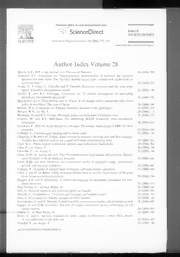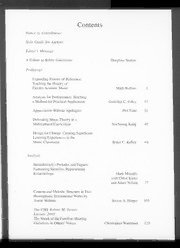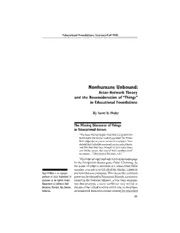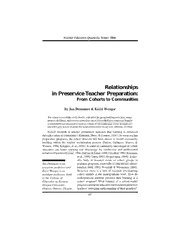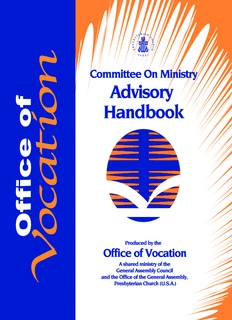
Committee on Ministry Advisory Handbook PDF
Preview Committee on Ministry Advisory Handbook
TABLE OF CONTENTS Preface Section 1 - Understanding Committees on Ministry • Healthy ministries: the goal of COM work...............................................1-1 • Characteristics of healthy ministry..........................................................1-1 • What is the COM....................................................................................1-2 • Does every presbytery have a COM? ....................................................1-3 • What are the responsibilities of the COM?.............................................1-3 • How does the COM deal with confidentiality?.........................................1-4 • Is the COM the same in every presbytery? ............................................1-4 • What are significant relationships for the COM?.....................................1-5 • How Is the COM structured?..................................................................1-5 • What resources are available for the COM? ..........................................1-6 • Glossary of Commonly Used Terms ......................................................1-8 Section 2 – Reflections on the work of the COM • Theological reflections........................................................................... 2-1 • Ethical considerations ........................................................................... 2-2 • Spiritual dimensions .............................................................................. 2-3 Section 3 – The COM and congregations • Nurturing relationships with congregations .......................................... 3-1 • Resources for understanding congregations........................................ 3-1 o Thinking systemically about congregational life ......................... 3-1 o Congregations in transition ........................................................ 3-1 o Appreciative Inquiry.................................................................... 3-2 o Life cycle issues.......................................................................... 3-3 o The COM and new church developments .................................. 3-3 o The COM and small Congregations .......................................... 3-3 o The difference size makes ......................................................... 3-4 o The COM and shared ministry and larger parishes .................... 3-5 o The COM and large congregations............................................. 3-7 o The COM and racial ethnic & multicultural congregations......... 3-8 o The COM and immigrant ministries ............................................ 3-9 • The triennial visit.................................................................................. 3-11 • Congregational mission studies........................................................... 3-15 • Congregational strategy ...................................................................... 3-17 • Forms o Sample Covenant for Shared Ministry ..................................... 3-19 o Triennial Visit – Ministry & Mission Reflection (Session)........... 3-20 o Triennial Visit – Ministry & Mission Reflection (Pastor)............. 3-21 Section 4 -- Relationships with congregations searching for pastoral leadership • A healthy goodbye................................................................................. 4-1 • Exit interviews........................................................................................ 4-2 • Ethics for departing pastors................................................................... 4-3 • Finding temporary leadership................................................................ 4-3 • Options for pastoral leadership.............................................................. 4-3 • Orderly Exchange with Formula Partner Churches............................... 4-4 • Ministers ordained by other denominations........................................... 4-5 • An outline for calling a new pastor......................................................... 4-6 • Coordinating with CPM for first call candidates................................... 4-10 • Checking references............................................................................ 4-12 • Background checks............................................................................. 4-14 • Additional information for the pastoral search...................................... 4-15 • Forms o Sample Covenant for Stated Supply Pastor.............................. 4-16 o Sample Covenant with an Interim Pastor.................................. 4-17 o Pastoral Call Form.................................................................... 4-19 Section 5 - The COM and church professionals • Ordination.............................................................................................. 5-1 • Ordination to other than installed positions.............................................5-2 • Membership in presbytery and validated ministries............................... 5-2 • Examining ministers for membership..................................................... 5-5 • Ministers of other denominations........................................................... 5-7 • Transfer of membership to PCUSA....................................................... 5-7 • Immigrant pastors.................................................................................. 5-8 • Pastoral care of church professionals.................................................... 5-9 • Models for pastoral care in the presbytery........................................... 5-10 • Partnering with pastors and sessions for entrance into the first call.... 5-11 • The Board of Pensions of the Presbyterian Church (USA).................. 5-12 • Compensation for ministers................................................................. 5-13 • Professional development................................................................... 5-15 • Annual reviews of ministry................................................................... 5-16 • Interim pastors..................................................................................... 5-17 • Designated pastors.............................................................................. 5-18 • Ministers serving in specialized ministries........................................... 5-19 • Professional pastoral care organizations............................................. 5-22 • Military and Veterans’ Administration chaplains.................................. 5-22 • Tentmaking ministry ............................................................................ 5-26 • Parish associates................................................................................ 5-27 • Retired ministers.................................................................................. 5-27 • Care and certification of Christian Educators....................................... 5-30 • Commissioned lay pastors .................................................................. 5-32 • Forms o Covenant with a Commissioned Lay Pastor............................. 5-36 o Sample Agreement for Designated Pastors.............................. 5-37 o Report Form for Non-Parish Ministers...................................... 5-39 o Sample Sabbatical Leave Policy............................................... 5-41 o Supplemental Covenant with a Tentmaker............................... 5-45 Section 6 – Preventing and responding to difficulties • Emphasizing congregational health....................................................... 6-1 • Work on prevention rather than intervention.......................................... 6-1 • Equip your COM.................................................................................... 6-2 • Intervene effectively when trouble arises............................................... 6-2 • Steps for conflict utilization.................................................................... 6-3 • Review of conflict utilization techniques ................................................ 6-5 • Pastoral care during a conflict............................................................... 6-7 • Ministerial misconduct Issues................................................................ 6-7 • Caring for the congregation and minister after misconduct ................... 6-9 • Caring for the minister......................................................................... 6-11 • About prevention................................................................................. 6-11 • Dissolution of church employment....................................................... 6-12 o Sample Agreement for Termination and Separation................. 6-18 Section 7 – Racial ethnic/multicultural considerations and resources • Working together cross culturally........................................................... 7-1 • Individual and congregational considerations........................................ 7-1 • COM and racial ethnic pastors and congregations................................ 7-2 Section 8 – Resources for the COM moderator • Fostering healthy ministries................................................................... 8-1 • Organizing for successful ministry within presbytery ............................ 8-2 • Important relationships for the COM moderator..................................... 8-2 • Working with congregations seeking pastoral leadership...................... 8-5 • Structuring the COM for healthy ministry............................................... 8-5 • Empowering the COM to say “No”......................................................... 8-7 • Moderating meetings............................................................................. 8-8 • Training for members of COM............................................................... 8-9 • The COM and AAEEO policy................................................................. 8-9 PREFACE Our goal in preparing this handbook is to assist Committees on Ministry (COMs) as they nurture healthy ministries in their presbyteries bringing pastoral sensitivity, hopeful faith, and openness to the surprises of God’s transforming power at work. The Committee on Ministry Handbook is an advisory handbook*, a guide for COM work to be used alongside the Book of Order. This is a compilation of resources and best practices for Committees on Ministry that represents the cumulative wisdom of many COMs in many places. However, nothing included in this Handbook supersedes the Book of Order or your own presbytery policies. You will find other helpful resources at www.pcusa.org/ministers/com. This document is available online there with the intention that it may be easily adapted and utilized in the ways that are most helpful to your presbytery’s ministry. This Advisory Handbook for Committees on Ministry is produced by The Office of Vocation, a shared ministry of the Office of the General Assembly and the General Assembly Council, Presbyterian Church (U.S.A.). There have been many authors from across the church who have contributed in some way to this evolving document. This handbook is dedicated to all of the members of Committees on Ministry who give so generously of their time, their energy, their wisdom, and their creativity to care for congregations and church professionals. You serve the church well and we are grateful. The Office of Vocation Presbyterian Church (U.S.A.) 100 Witherspoon Street Louisville, Kentucky 40202-1396 1-888-728-7228 ext 5503 July 2007 “What is an “advisory handbook”? This document is advice for the church – the gathered wisdom from the experiences of persons across the church and those of us who serve you in the national offices. It is not mandatory or required. The advisory handbooks include best practices, recommended processes, and discussion of specific areas about which we frequently receive questions. It is intended to assist presbyteries as they develop policies and processes so that they can make public and consistent the ways in which the presbyteries fulfill the denomination’s standards and requirements. This handbook is to be used alongside the Book of Order where you will find essential and foundational materials. National standards and requirements are found there. The current Book of Order and the advisory handbooks are intended to encourage the church’s movement toward a more flexible, less regulatory polity. Such a polity recognizes that there may be many different and equally acceptable ways to uphold the national standards for preparation, ordination, installation, and the practice of ministry. We recognize the diversity in the PCUSA and the wide variety of mission needs. It is expected that presbyteries and others will use this material as you see fit for your ministry context – adopting or adapting what is offered here, and creating your own policies and processes. As you do so, we invite you to share them with the Office of Vocation that we might share them with others. Section 1 Understanding the Committee on Ministry Section 1 Healthy ministries: the goal of Committee on Ministry work The Committee on Ministry’s primary responsibility is “to serve as pastor and counselor to the ministers and Certified Christian Educators of the presbytery, to facilitate the relations between congregations, ministers, and Certified Christian Educators, and the presbytery, and to settle difficulties on behalf of presbytery when possible and expedient.” (G-11.0501) The responsibilities of the COM are best fulfilled by fostering healthy ministries in the congregations of the presbytery. Health, wellness, wholeness, well-being: all these English words come from a common root word that connects to the Hebrew word, shalom. Shalom is variously translated as a greeting akin to “hello,” as peace, and as wholeness, health and well- being. God’s will for the shalom, the peace and health, of God’s people is a theme found in every part of the Bible. Yet, health in congregational life is not so easily defined as health in a human body. The shape of congregational life varies from one place to another. Not every church can or should engage in precisely the same forms of worship, Christian education, congregational fellowship, or service to the world beyond the church building. We might be tempted to say that healthy congregations, like beauty, are in the eye of the beholder. The marvelous diversity of healthy congregations might even encourage us to conclude that healthy congregations can only be known when we see them. However, there are some shared characteristics that are discernable in most healthy congregations. Characteristics of healthy ministry Healthy congregations can be found in inner city settings, on the square in county seat towns, and nestled into suburban developments. Yet in all the variety of healthy expressions of ministry, healthy congregations are alike in sharing many of these norms and behaviors: • Vibrant faith in God is expressed in lively, faithful worship and in a commitment to engage in ministries of justice and compassion. • Caring response to the needs of people outside the church is as important as fostering relationships of friendship and caring within the congregation. • Following God’s intentions for the congregation is more important than maintaining buildings or merely balancing the budget. • Respect for tradition and the past is balanced by flexibility and creativity. • People of all ages are growing in wisdom and knowledge. • Relationships of friendship and mutual accountability provide the context for inclusive hospitality and respectful evangelism. • Respect, accountability and trust rather than control, individualism and secrecy characterize relationships within the congregation. • Clear structures of authority and decision-making are coupled with open access to those structures by the entire congregation. 1-1 Section 1 Understanding the Committee on Ministry • Transparency and openness in regard to communication, information sharing and decision-making are balanced by appropriate and respectful treatment of confidential information. • Respect for the authority of called and elected leaders is coupled with the awareness that leaders are only part of a very complex organism. • Congregational self-confidence is balanced by appropriate humility. In the language of another era the Preliminary Principles of the Book of Order tells us what the church is called to do. The great ends of the church are the proclamation of the gospel for the salvation of humankind; the shelter, nurture, and spiritual fellowship of the children of God; the maintenance of divine worship; the preservation of the truth; the promotion of social righteousness; and the exhibition of the Kingdom of Heaven to the world. (G-1.0200) Congregations, like the people who are part of them, are gifted and flawed, faulty and faithful, often messy and always thoroughly human. No congregation will ever fully live up to the ideal of the great ends of the church. However, when congregations are healthy, they are able to devote their best energies to fulfilling God’s call to them, as each congregation finds its way to respond to the claims of God on the people of God. Committees on Ministry that are healthy devote their best energies to helping the ministries of the presbytery to be healthy. As they do, they partner with God in bringing to reality the Great Ends of the Church. What is the COM? The Committee on Ministry is that committee in each presbytery charged by the Constitution of the Presbyterian Church (U.S.A.) to …serve as pastor and counselor to the ministers and Certified Christian Educators of the presbytery, to facilitate the relations between congregations, ministers, and Certified Christian Educators, and the presbytery, and to settle difficulties on behalf of presbytery when possible and expedient. (G-11.0501) Presbytery may delegate to the committee the authority to … find in order calls issued by churches, to approve and present calls for service of ministers, to approve the examinations of ministers transferring from other presbyteries (G-11.0402), to dissolve the pastoral relationship in cases where the congregation and pastor concur, and to dismiss ministers to other presbyteries, with the provision that all such actions be reported to the next stated meeting of the presbytery." (G-11.0502h) The Committee on Ministry is responsible for the health of ministry in the presbytery, attending to the well-being of congregations and their faithfulness in responding to God’s call to them as well as the nurture, support and professional 1-2 Section 1 Understanding the Committee on Ministry development of church professionals, including ministers of the Word and Sacrament, Certified Christian Educators, and, in some presbyteries, Commissioned Lay Pastors. Does every presbytery have a COM? Yes. The Book of Order, in G-9.0902a, lists the Committee on Ministry as one of the structures required by the constitution for the presbytery. Other required presbytery structures are the Committee on Representation, the Committee on Preparation for Ministry, the Nominating Committee, the Permanent Judicial Commission, and “[a] council for the coordination of mission and program.” What are the responsibilities of the COM? The Committee on Ministry is “to serve as pastor and counselor to ministers; to facilitate relations between congregations, ministers, and the presbytery; and to settle difficulties on behalf of presbytery.” (G-11.0501) The Book of Order further defines these areas of responsibility in G-11.0502. a. It shall visit regularly and consult with each minister in the presbytery; report to presbytery the type of work in which each minister of the presbytery is engaged; require an annual report of each minister performing work which is not under the jurisdiction of the presbytery or a higher governing body of the church. b. Make recommendations to presbytery regarding calls for the services of its ministers. c. Visit with each session of the presbytery at least once every three years. d. Counsel with churches and their Pastor Nominating Committees regarding calls for permanent pastoral relations. e. Counsel with churches regarding the advisability of calling a designated pastor. f. Counsel with churches regarding stated supplies, interim pastors, interim co- pastors, interim associate pastors, and temporary supplies, providing lists of available pastors, commissioned lay pastors, and qualified lay persons who have been trained and commissioned by presbytery to supply vacant pulpits. g. Provide for the implementation of equal employment opportunity for ministers and candidates, and report to presbytery the steps taken by each calling group to implement equal employment opportunity. h. If authorized by presbytery, find in order calls issued by churches, approve and present calls, approve examination of ministers transferring from other presbyteries, dissolve pastoral relationships in certain situations, grant permission to labor within or outside the bounds of presbytery, and dismiss ministers to other presbyteries. i. Promote the peace and harmony of the churches. j. Counsel with session regarding difficulties in the congregation, act as mediator in conflict situations, and/or act to correct difficulties in a conflict situation when asked to do so by the parties involved or when authorized by presbytery to do so. Additional responsibilities of the Committee on Ministry identified by the Book of Order include work with ministers joining another denomination (G-11.0416) or ministers transferring to the Presbyterian Church (U.S.A.) from other denominations (G-11.0404, G-11.0405) or from other presbyteries (G-11.0402), work with ministers seeking release 1-3 Section 1 Understanding the Committee on Ministry from the exercise of ordained office (G-6.0600), and dissolution of pastoral relationships (G-14.0600), if authorized to do so by presbytery. In some presbyteries the COM or a subcommittee of the COM may be assigned responsibility for working with commissioned lay pastors. How does the COM deal with confidentiality? Confidentiality about the work of the COM is crucial to the integrity of the Committee and the level of trust the members of a presbytery will place in it. Matters before the COM are sensitive and should be held in confidence unless the welfare of a congregation or the safety of an individual is in question. Even then, the COM must be extremely cautious about sharing information except with those who have a clearly identified need to know. Information learned through the COM should never, under any circumstances, be the subject of casual conversation, especially not with persons who are unaffiliated with the COM. It is wise for the COM to have a policy that requires members of the COM to excuse themselves from any discussion of the congregation with which they work or of which they are members. A similar policy of excusing oneself when a discussion concerns a church professional who is a close friend will help avoid any appearance of favoritism. Members of the COM hold an important position of trust and responsibility in the presbytery, a position that carries with it a significant degree of power, although sometimes the COM may be perceived as having more power than it actually does. Members of the COM must be mindful of both their actual power and their perceived power and strive to be above reproach in their dealing with confidential matters. Is the COM the same in each presbytery? Yes and no. The Book of Order, in G-11.0501b, specifies that the COM “ . . . shall consist of equal numbers of elders and ministers with a membership of at least six.” While the minimum size of the Committee is stipulated by the Book of Order, there is no maximum number of Committee members. The presbytery determines how many Committee members (more than six) best meets its individual needs. However, whatever the size of the Committee, the numbers of elders and ministers must be equal. COMs vary a great deal, as do the presbyteries they serve. Most have 12-24 members, all of whom are dedicated volunteers. Some members have a great deal of training and experience. Others are brand new and are trying to learn the jargon. Many COMs have to resource congregations spread over great distances and reflecting great diversity. Some COMs (those in compact presbyteries) are able to meet on a weekday evening, but most meet during a weekday. Most need to meet monthly for 4 or 5 hours. Some COMs “co-opt” additional persons to assist with special kinds of work such as triennial visits, conflict response or pastoral support of church professionals. The COM is staffed by the Executive or General Presbyter, an Associate Presbyter, and/or the Stated Clerk. Some COMs always have many churches without pastoral leadership, while others have only a few vacancies each year. Some COMs have the resources of a Presbyterian seminary, pastoral counseling centers, or many retired ministers willing to serve on an occasional basis. Others have to be especially creative to meet the needs of their churches and ministers. 1-4
Description:The list of books you might like

The 48 Laws of Power

The Spanish Love Deception

The Subtle Art of Not Giving a F*ck

Corrupt (Devil's Night #1)
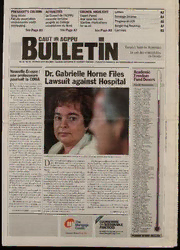
CAUT Bulletin December 2006 (Volume 53, Number 10)

Sonic the Hedgehog #37
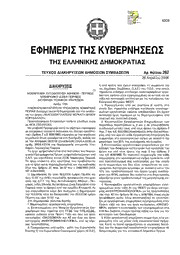
Greek Government Gazette: Part 7, 2006 no. 262
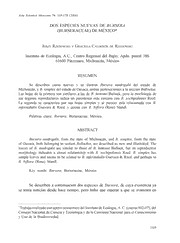
DOS ESPECIES NUEVAS DE BURSERA (BURSERACEAE) DE MÉXICO

Greek Government Gazette: Part 2, 2006 no. 1889

Suddenly Psychic: a Skeptic''s Journey

Economics: A Primer for India

Meet the Masters

Greek Government Gazette: Part 4, 2006 no. 465

Project 1 - Workbook (3rd Edition)
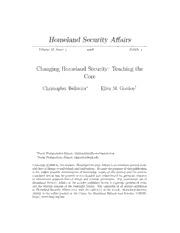
DTIC ADA484047: Changing Homeland Security: Teaching the Core
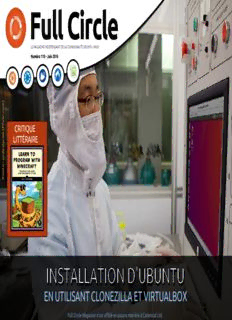
Full Circle Magazine FR
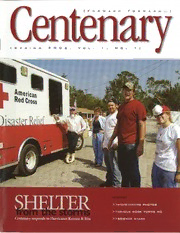
Centenary Magazine
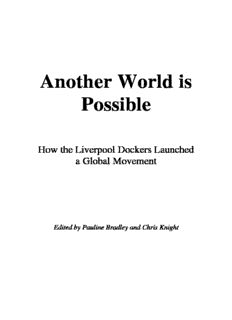
Another World is Possible
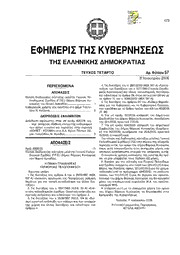
Greek Government Gazette: Part 4, 2006 no. 57
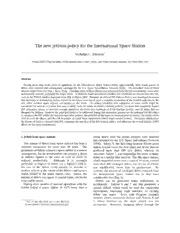
The New Jettison Policy for the International Space Station
